The Complexities of Castlevania: SOTN – Tertiary Combat Systems
December 12th, 2017
[When developing Castlevania: Symphony of the Night, director Koji Igarashi wanted to make a game which would “overturn player’s ideas about Castlevania, yet also feel like a Castlevania game”. In pursuing this vision, his team made SOTN’s game system much more complex, incorporating RPG systems and a wide variety of nuanced player actions. This series of articles will examine how these additions shape SOTN’s core gameplay of moving through space to dodge and attack enemies.]
SOTN’s movement mechanics, standard weapons, and subweapons leverage the game’s core spatial and timing dynamics to offer the player various means of engaging with enemies (dancing up close with fists, aiming a projectile at a distance, etc.). However, the developers also made some weapons and mechanics too abstract, nuanced, or only particular to certain cases. As such, these parts of the game system fall way beyond the reach of the average player. SOTN’s tertiary systems generally fall into the same category, wasteful portions of the game design which contribute very little to SOTN’s core gameplay.
Expendable Weapons
The player can find various single use weapons throughout Dracula’s castle, such as javelins or TNT. These items function much like subweapons, but the pick-ups aren’t very common, leaving the player with few opportunities to experiment and figure out how best to work these attacks into their repertoire.
Furthermore, using an expendable weapon requires the player pause the game, unequip their current weapon, equip the expendable weapon, unpause, and then use the weapon. As players probably won’t have too many expendable weapons in hand, they’ll likely have to repeat the process soon after to re-equip their original weapon. So the interface acts as a further barrier to entry.
Spells
After buying the respective script from the castle’s librarian, Alucard can perform a spell by inputting a fighting game-esque sequence of inputs. (Alternatively, if you already know the button combinations, say, from an online FAQ, then you can learn the spells without paying for them). Although the text descriptions for spells are quite short, they provide enough information to get the player started. However, the spells aren’t particularly worthwhile, unless you’re looking to water down the combat difficulty. Dark Metamorphosis falls back on the blunt / sharp weapon attributes. Summon Spirit, Tetra Spirit, Soul Steal, and Sword Brothers attack nearby enemies (with Soul Steal healing Alucard as well). These insta-win spells aren’t terribly different from the Cross sub-weapon and allow the player to opt out of engaging enemies head-on. Wolf Charge and Wing Smash function similarly to Samus’s speed booster mechanic in the Metroid games, although without the destructible environment. Given the abundance of lengthy hallways and occasional large open area, these mechanics do allow for some fast travel. Hellfire’s teleportation doesn’t have much functional purpose (most enemies can be avoided with the traversal mechanics, which is a much more engaging than inputting a spell).
Familiars
Hagihara: But the familiars were something we barely had time to finish in the development, and they almost didn’t get added to the game. So most of the enemies aren’t really balanced with regard to the player using a familiar. What I’m trying to say is, please don’t overlevel the familiars. (laughs)
Igarashi: For people who think they’d be helpful for them, it’s fine to use them. But for those who don’t want the game balance broken, it’s also fine to ignore them.
Familiars are equipable buddy characters. They float around Alucard and perform certain actions depending on their individual personality. For example, the faerie heals Alucard when he’s low on health, while the sword will do various sweeping moves to attack nearby enemies. Other than choosing which familiar to equip, the player has no control over these assists. They attack on their own and level up on their own. In this sense, they generally make combat easier and introduce a weak variable factor into combat which can occasionally prompt the player to switch up tactics.
Equipment
Along with standard weapons, Alucard can equip headwear (for intelligence and defence), armour (for defence), cloaks (for constitution), and accessories (for added effects). As well as increasing Alucard’s stats, these items can grant specific properties. For example:
- Spike Breaker armour lets Alucard to walk through spikes.
- The Blood Cloak converts Alucard’s damage to hearts.
- The Shield Rod and a shield, when equipped in combination, allow Alucard to perform a special defence-boosting spell.
Unfortunately, the item description text in the equipment menu only offers a brief description of these nuanced properties, so knowing what items to equip and where to use them is a matter of trial and error. On the other hand, you could simply ignore the attributes and simply equip the item with the best stats.
Experience System
If you’ve read my writing before, you’ll probably know that I’m suspicious of levelling as this abstract force can deconstruct a game’s core gameplay. Although SOTN features character levelling, the experience system curbs grinding and encourages the player to fight statistically stronger enemies.
The game developers designate each enemy a level. Alucard’s experience for defeating an enemy is calculated by multiplying the enemy’s base EXP by 1.25 or dividing the enemy’s base EXP by 1.5, depending on Alucard’s relative level. So, if Alucard is one level below an enemy, he’ll gain the base EXP plus an additional 25%. The trick, though, is that if Alucard is two levels below an enemy, he’ll gain the result of the previous equation multiplied by 1.25—so (EXP X 1.25) X 1.25—and so on, up to five levels below. Conversely, when Alucard is a level higher an enemy, the enemy’s base experience is divided by 1.5. The division can shrink Alucard’s acquired experience down to a single digit,, thus making grinding on peon enemies a rather fruitless pursuit.
Although the levelling system cleverly minimises exploitation, aside from encouraging the player to tackle stronger enemies, it doesn’t do anything to make the combat more engaging.
Conclusion
SOTN’s tertiary systems generally contribute very little to the game’s combat. The levelling system increases Alucard’s stats and therefore controls a significant aspect of game difficulty. However, levelling by itself does not make combat any more varied, dynamic, or deeper. Familiars do influence combat through their behaviours; however, unless a player allows a familiar to significantly level up, their influence is negligible. According to the developers themselves, they didn’t have enough time to balance familiars, so if pursued, these tag-along creates can potentially have a negative effect on combat.
Expendable weapons, spells, and equipment increase the player’s viable options, but face a number of obstructions which limit regular players from adding them to their regular repertoire. Expendable weapons are closeted behind layers of inconvenient interface and are rare enough that players don’t really have many opportunities to put them to use. Equipment suffers from being too nuanced and the limited instruction provided by a brief text description in a menu. Spells have some utility, but mainly to water down combat.
Taken in sum, these systems suffer from a lack of functionality and clarity. Players can much more easily get through the game by focusing on the combat dynamics which they can see directly in front of them, as opposed to the abstract complexities hidden within these tertiary systems.
The Complexities of Castlevania: SOTN – Subweapon Design Space
December 8th, 2017
[When developing Castlevania: Symphony of the Night, director Koji Igarashi wanted to make a game which would “overturn player’s ideas about Castlevania, yet also feel like a Castlevania game”. In pursuing this vision, his team made SOTN’s game system much more complex, incorporating RPG systems and a wide variety of nuanced player actions. This series of articles will examine how these additions shape SOTN’s core gameplay of moving through space to dodge and attack enemies.]
As with the earlier Castlevania games, sub-weapons function as the primary form of projectile attacks. Their unique movement trajectories introduce a range of aiming techniques to the gameplay, and offer the player more ways of engaging with the spatial game. Aiming subweapons also draws on the player’s knowledge / observation of enemy movement patterns as well as their timing skills. SOTN’s projectile attacks don’t stray far from the series formula. Some of the changes and additions support the ability set’s focus on aiming and spatial gameplay, while other elements function more as spells or special attacks and stand out as anomalies within Alucard’s reportaire of subweapons.
Knife – A dagger which flies rapidly in a straight line (consumes one heart). The player aims by drawing a mental line between Alucard and their target. The quick travel speed renders timing out of the equation (unfortunate given that a slower strike would have made the attack more skill-based). Knives therefore collapse the space between Alucard and his target.
Axe – A projectile which travels in an upwards curve (consumes four hearts). Axes trade speed and ease of aiming for range and strength. The projectile’s trajectory covers a blind spot diagonally above Alucard, but also creates a new blindspot directly in front of him. Axes also travel more slowly than knives and continue to move fall after making contact with an enemy. The subweapon therefore requires much more spatial (aiming and covering blindspots) and timing skill than knives, but also rewards the player with effectiveness.
Cross – A large beam of light which attacks all enemies on screen (consumes one hundred hearts). The heart requirement offsets the weapon’s effectiveness. Crosses function more like spells and don’t require much skill besides trying to net as many enemies on screen as possible. This variation of the cross loses the unique spatial trajectory of the classic boomerang-esque cross.
Stopwatch – A trinket which freezes enemies for several seconds (consumes twenty hearts). Players can use the stopwatch to strategically open up holes in an enemy’s attack, to act as a buffer to dodge attacks, or to pause gameplay when overwhelmed. The effectiveness of the stopwatch depends on the player’s awareness of the combat dynamics at play and the particulars of a given situation.
Bible – A floating bible circles Alucard and protects him from nearby enemies (consumes five hearts). Since the bible both shields Alucard and attacks enemies, the subweapon doubles as both an offensive and defensive sub-weapon. The player aims the bibles by moving Alucard into the proximity of enemies. I can’t help but feel that if the bible weren’t so effective (i.e. if the movement speed were slower, allowing for holes in the shield), the developers could have extracted more nuanced play out of this subweapon (e.g. the player moving Alucard around enemies to cover potential gaps in the bible’s movement). Portrait of Ruin‘s bible subweapon works in this way.
Rebound Stone – A projectile that’s thrown diagonally downwards and bounces off walls (consumes three hearts). The rebound stone extends on the knife sub-weapon as it involves dealing with straight lines, but the lines move diagonally (more complex aiming), bounce off walls, and can move through enemies (which adds more strategy as one stone can potentially attack multiple enemies or one enemy multiple times). In practice, these simple rules create a great deal of complexity when aiming, which is why Rebound Stones are so engaging to use. The potential applications for this type of projectile attack are significant (check out Trajectile for the DSiware as an excellent example). The white trails stand out against the dark backdrops and help the player make sense of the projectile’s movement pattern.
Agunea – A lightning projectile which moves in a straight line and can sustain damage over time once it makes contact with its victim (consumes five hearts). Once the player lands a hit, so long as they hold down the appropriate buttons and don’t run out of hearts or take damage, they can maintain the attack (such as in the GIF). In this way, the weapon encourages the player to dodge incoming attacks or create an environment free of distraction (again, see the GIF). However, considering the conditions needed to make full use of the mechanic (finding one of only four available agunea in Dracula’s castle, having a sufficient supply of hearts, using it on an enemy with sufficient health, and avoiding all incoming attacks), few players are likely to unlock the subweapon’s potential.
Bibuti – A cluster projectile that’s dropped on the ground (consumes three hearts). The longer the fall, the more the water spreads out, and thus the wider the range. The density/range of the clusters therefore depends on the height of the player’s jump. Although the arc is a little different, Bibuti’s unique aiming—much like the Rebound Stones—remind me of aiming fireballs in Super Mario Bros. The unorthodox aiming position diagonally above an enemy creates a unique spatial puzzle. Alternatively, the player could leverage Bitubi’s active state on the ground and use it more like a landmine (as captured in the GIF).
Holy Water – A dropped projectile with similar dynamics to Bitubi (consumes three hearts). Since Holy Water is held in jars, the projectile won’t spread on descent. However, once the jar smashes on the floor, a large flame will rise up and remain active for a short period of time. Thus, the subweapon encourages players to predict enemy movement so as to catch enemies within the flame.
Conclusion
SOTN’s changes and additions to subweapons are a bit of a mixed bag. Agunea (a new addition) and the altered Cross function more like spells than subweapons. However, with the Bitubi (the other new addition), the developers built more nuance into the Holy Water design, allowing the subweapon to function as both a dousing projectile and a landmine. As the examples demonstrate, most of the subweapon complexities revolve around the speed, timing, and trajectory of projectiles moving through space. Since these weapons are built around the core dynamics of combat, they support the combat gameplay by providing functionally unique viable options to the player.
The Complexities of Castlevania: SOTN – Standard Weapon Design Space and Variation
December 6th, 2017
[When developing Castlevania: Symphony of the Night, director Koji Igarashi wanted to make a game which would “overturn player’s ideas about Castlevania, yet also feel like a Castlevania game”. In pursuing this vision, his team made SOTN’s game system much more complex, incorporating RPG systems and a wide variety of nuanced player actions. This series of articles will examine how these additions shape SOTN’s core gameplay of moving through space to dodge and attack enemies.]
“Since we increased the size of the player character, we had to think about how that balance would work with the traditional whip; the problem is that the whip would reach across the entire screen, so we decided to make an action game based on other weapons instead”.
These “other weapons” form the foundation of SOTN’s combat system, defining the timing and spatial dynamics of each encounter as well as the player’s viable options. The weapon system provides the combat with a great deal of potential variety, but its sprawling and unregulated nature also clutter and fray the play experience.
The player can find around a hundred weapons scattered throughout Dracula’s castle and equip them as they please. The game organises the large number of arms into several groups: clubs, fists, shields, short swords, one-handed weapons, two-handed weapons, and throwing projectiles. By adjusting the variables below, the developers ensured that each weapon type occupy a unique functional position within the design space.
- Speed (how long it takes the attack hit box to enter its first frame)
- Range (the size of the hit box)
- Duration of attack (number of active hit box frames)
- Attack animation (the size, shape, and direction of the attack)
- Power (attack damage)
- Defence (for shields only)
- Additional properties
So short swords, one-handed weapons, and two-handed weapons represent the majority of arms and present the player with a reasonably clear choice between:
- Short swords: high speed, low/medium range, and low power
- One-handed weapons: medium speed, medium range, and medium power
- Two-handed weapons: low speed, high range, and high power, but no defence boost from shield
Shields allow the player to block attacks; and as the only equipable to offer this function, they play a distinct role in the design space. Similarly, throws have a unique range and travel arc which allow the player to attack from a distance. Clubs cover Alucard from the front and rear and do hit damage as opposed to cut damage (an additional attribute). Fists have a limited range, but a high speed. At close range, fists can perform double damage and from above Alucard can attack enemies beneath him.
“Each staff member had a special attachment to a different kind of blade, so we ended up with a good variety…”
Toshiharu Furukawa, SOTN designer
Each weapon within a group conforms to the same general properties, but occupies its own space within the category’s range. Furthermore, many weapons are imbued with additional attributes which facilitate more nuanced playstyles and contribute to a more varied and wrinkly combat system. The three examples below demonstrate the implications that weapon choice has on gameplay.
The Estoc is a giant German two-handed sword with a strong attack, huge hit box, and long attack duration. These strengths are balanced out by several significant drawbacks:
- The sword is so large that when Alucard strikes, he lunges forward.
- The attack takes some time to start up.
- The attack leaves a large, exposed gap where ground enemies can slip through. The player can’t counter by crouching as attacking with the Estoc forces Alucard into a standing state.
Together these weaknesses make it impossible to attack half-height ground enemies, unless the castle architecture allows Alucard to approach from below (for example, on a staircase). This gaping blindspot encourages the player to develop new ways of engaging these foes.
Despite belonging to the same weapon category, Nunchakus (a pair of wooden hand batons) are completely different from the Estoc. They have weak attack, a small hit box, and a short attack duration. A fast start up time and a second follow through attack that occurs soon after the initial strike offset these cons. Although Alucard can attack quite quickly with the Nunchakus, he needs to be closer to his enemies to land the full attack, which puts him at greater risk. Thus, a Nunchakus wielder would need to have a greater consciousness of enemy openings and be able to develop strategies for sweeping in and out of enemy range.
The Icebrand and Mormegil are almost identical except for their elemental attributes. The Icebrand, being an ice elemental weapon, does extra damage against fire enemies, but heals ice enemies. The Mormegil, being a dark elemental weapon, does extra damage against holy enemies, but heals dark enemies. Depending on the given situation, the effectiveness of either weapon differs. So these two weapons encourage an awareness of enemy elementals and stress player knowledge.
“…though this did result in the developers’ favourite weapons being super-powered. Not realising that no one liked shields was a bit of a blind spot…”
Toshiharu Furukawa, SOTN designer
As the second half of Furukawa’s comment denotes, SOTN’s complex weapon design space suffers from a number of blemishes which significantly impeed the gameplay.
Weapons not conforming to type
Although Nunchakus and the Estoc belong to the same weapon class, they facilitate completely different combat dynamics. Wielding Nunchakus involve dealing with enemies at close range (higher reaction and adaption skills), while the Estoc prompts the player to compensate for a gaping blind spot (more strategic, planned attacks). Nunchakus function more like fists than a heavy two-handed weapon. Weapons like Nunchakus (which are in no small number) therefore blur the clear separation between categories, which makes it more difficult for players to rely on the weapon categorisation to make informed decisions over weapon choice.
The Shotel, Combat Knife, and Basilard similarly betray the definition of a short sword. The Shotel has a medium range, the Combat Knife has a shorter range, and the Basilard has an even shorter range still, even though the game classes them all as short swords.
Too nuanced to be applicable for average players
As with the high jump and air kick, some weapon properties are too slight or nuanced to be functionally viable for your average player. For example, certain weapons have elemental attributes (such as Icebrand and Mormegil) or are sharp (swords) or blunt (clubs). Weapons with these particular properties work well against some enemies, but not against others. However, effectively exploiting these details in combat hinges on some unrealistic expectations:
- the player will be able to identify an enemy’s weakness through its appearance, even though the form-function relationship in SOTN is quite inconsistent. For example, some skeletons are weak against holy, but others aren’t. (Browse through the game’s bestiary for more examples).
- the player will pause the game to switch to the most effective weapon
- the player will know which weapon (out of a maximum of 90ish) has the required elemental attribute for the situation or will be willing to wade through their weapon list to find out
As for how many weapon attributes are too slight or nuanced, I find it hard to draw a clear line. I also haven’t tried out all of the weapons myself, so I’m not exactly sure. You’re welcome to judge for yourself though. This weapon list shows each weapon’s special attributes.
Weapons as progress indicators lead to clutter
Despite the significant array of choice on offer, most weapons conform to its category’s base speed, range, duration of attack, and attack animation properties, with the key differentiator being power. So as Alucard progresses through the castle, he stumbles upon similar weapons with increasingly higher power stats. The idea being that weapon power creates a sense of character development as the damage numbers go up. However, using weapons as a barometer for progress like this adds an excessive number of functionally similar items to the player’s inventory. Regardless of the fact that weapon specialties are perhaps too nuanced for most players, the paralysing effect of having so many choices in one’s inventory only makes it harder for players to realise the versatility on offer.
Conclusion
SOTN’s arsenal of weapons provides a rich design space which focuses the player on various facets of the game’s combat design (for example, close combat, agile but weak attacks, and elemental strikes). The weapon classes provide reasonably clear distinctions and help players organise their preferences. The variation works on a functional level because the properties of weapon size, length, hitboxes, and animation are grounded in the dynamics of time and space.
However, complexities relating to more abstract attributes (such as elemental and sharp/blunt indicators) sit outside of the average player’s reach. Also, some weapons function more closely to weapons outside of their designated type. These anomalies fray the distinctions of choice within the game. The overwhelming number of weapons on offer (for the sake of facilitating player progress) also swamp the design space, which makes it harder for unique options to stand out. One can’t help but think that 30 more functionally distinct weapons would be easier for players to manage than 90 reasonably similar weapons. So much like the traversal mechanics, the weapons suffer from unrefined details in the game’s design.

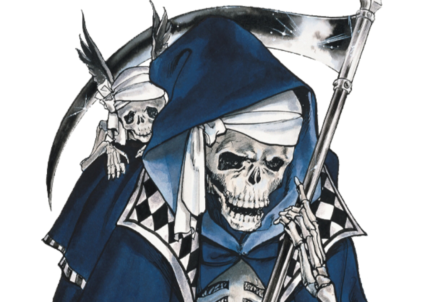
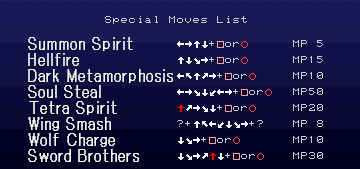
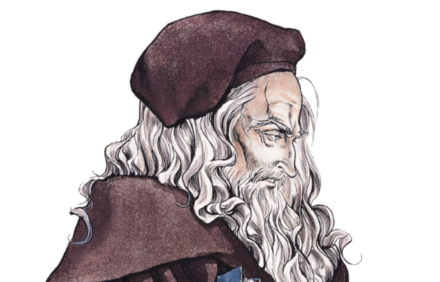
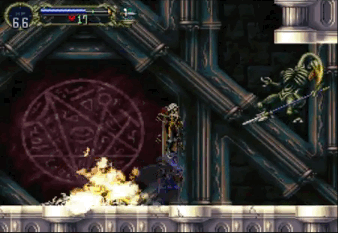

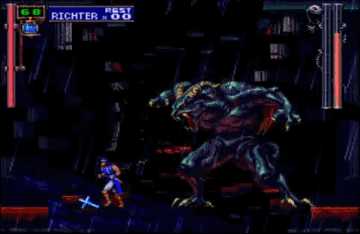


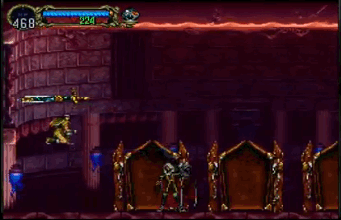
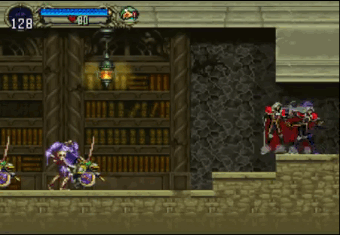
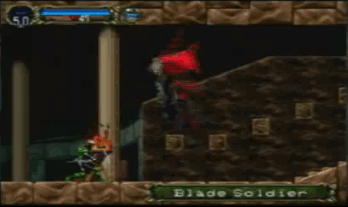

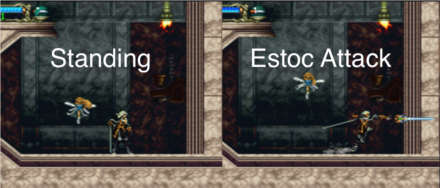


 Game Design Companion: A Critical Analysis of Wario Land 4 - $7.99
Game Design Companion: A Critical Analysis of Wario Land 4 - $7.99 Level Design: Processes and Experiences
Level Design: Processes and Experiences Speed Boost: The Hidden Secrets Behind Arcade Racing Design - $5.99
Speed Boost: The Hidden Secrets Behind Arcade Racing Design - $5.99 Adventures in Games Analysis: Volume I - $5.99
Adventures in Games Analysis: Volume I - $5.99







